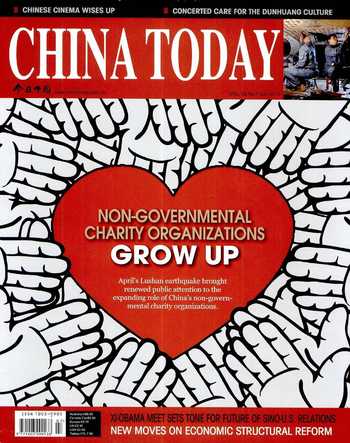Non-governmental Charity Organizations Grow up
Aprils Lushan earthquake brought renewed public attention to the expanding role of Chinas non-governmental charity organizations, which first found themselves in the national spotlight five years ago after the Wenchuan earthquake. Such organizations have grown in both number and level of professionalism over the past years. Meanwhile, the ranks and influence of individual volunteers also continue to grow. Many are inspired to action through social media tools like microblogging and WeChat, a text and voice messaging smart phone app.
In the business sector, entrepreneurs and enterprises are committing themselves to philanthropy in larger numbers than ever before. More than half of the most generous Chinese individuals on the Hurun Philanthropy List 2013 are entrepreneurs. Though the volume of donations per head has been slipping over the past years due to economic slump, Hurun studies show that Chinese business circles on the whole are adopting charitable causes in a more“systematic” way, as enterprises come to see charity as part of their corporate responsibility.
Growing corporate generosity is reflected in disaster relief efforts, medical aid programs, poverty alleviation schemes, assistance to students of lowincome families and funding for environmental protection projects. Over the past few years the total volume of annual social donations has stayed at around RMB 80 billion.
As public participation in charitable causes grows, non-governmental charity organizations are coming under greater scrutiny. They must prove themselves transparent and accountable in order to earn the publics trust, which has been rocked by several scandals in recent years. Though non-governmental charity falls outside the scope of state, the government still has a part to play in giving organizations the room they need to flourish, ensuring they are held accountable and operate within the scope of the law, and doing all it can to boost the sectors healthy and long-term development.

